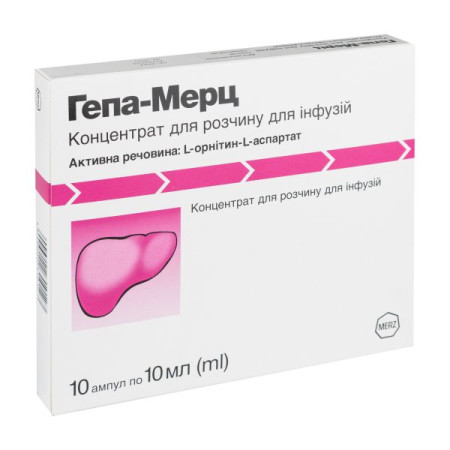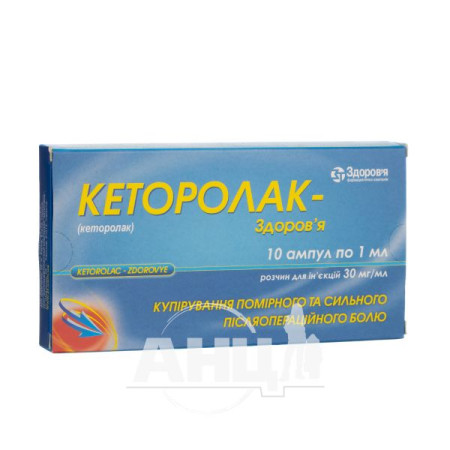Brimonal 0.2% eye drops solution 0.2% dropper bottle 10 ml

Instructions Brimonal 0.2% eye drops solution 0.2% dropper bottle 10 ml
Composition
active ingredient: 1 ml of solution contains brimonidine tartrate 2 mg;
1 ml contains 23 drops;
Excipients: sodium chloride, tartaric acid, sodium tartrate, hypromellose, benzalkonium chloride, sodium hydroxide, water for injections.
Dosage form
Eye drops, solution.
Main physicochemical properties: transparent, slightly viscous solution of greenish-yellow color without visible mechanical particles.
Pharmacotherapeutic group
Antiglaucoma and miotic agents.
ATX code S01E A05.
Pharmacological properties
Pharmacodynamics
Brimonidine is an alpha-2-adrenergic receptor agonist that is thousands of times more selective for alpha-2-adrenergic receptors than for alpha-1-adrenergic receptors.
This selectivity is the reason for the absence of mydriasis and microvascular constriction associated with human retinal xenografts.
Topical application of brimonidine tartrate in humans reduces intraocular pressure with minimal effects on cardiovascular and pulmonary function.
Brimonidine tartrate 0.2% has a rapid onset of action, with peak ocular hypotensive effect occurring within 2 hours of application. In studies, brimonidine tartrate 0.2% reduced intraocular pressure by an average of 4-6 mmHg.
Animal and human studies suggest that brimonidine tartrate has a dual mechanism of action. Brimonidine tartrate 0.2% is thought to lower IOP by decreasing aqueous humor production and increasing uveoscleral outflow.
Pharmacokinetics
Following ocular administration of 0.2% brimonidine tartrate twice daily for 10 days, plasma concentrations were low (mean Cmax was 0.06 ng/mL). Repeated instillations (twice daily for 10 days) resulted in little accumulation in the blood. The area under the plasma concentration-time curve at 12 hours at steady state (AUC 0-12h) was 0.31 ng/h/mL compared to 0.23 ng/h/mL after the first dose. The mean systemic elimination half-life in humans following topical administration was approximately 3 hours. The extent of plasma protein binding of brimonidine following topical administration in humans is approximately 29%.
Brimonidine binds reversibly to melanin in ocular tissues in vitro and in vivo. After two weeks of ocular administration, brimonidine concentrations in the iris and choroid plexus were 3-17 times higher than after a single dose. No accumulation was observed in the absence of melanin.
The significance of melanin binding is not known. However, biomicroscopic examination of patients treated with brimonidine tartrate 0.2% for up to 1 year did not reveal any significant ocular adverse reactions. No significant ocular toxicity was observed in monkeys treated with brimonidine tartrate at doses approximately 4 times the recommended dose.
Brimonidine is well absorbed and rapidly excreted in humans after oral administration. A significant portion of the dose (approximately 75%) is excreted in the urine as metabolites within 5 days. In vitro studies using animal and human liver indicate that its metabolism is primarily mediated by aldehyde oxidase and cytochrome P450. Systemic elimination is thought to be primarily by hepatic metabolism. Urinary excretion is the major route of elimination of brimonidine and its metabolites.
Elderly patients:
The Cmax, AUC, and half-life of brimonidine after a single dose in elderly patients aged 65 years and older were similar to those in younger adults, indicating that age does not affect systemic absorption and elimination of the drug.
Indication
Open-angle glaucoma or increased intraocular pressure (IOP).
Monotherapy in patients for whom the use of topical beta-blockers is contraindicated.
As part of complex therapy with other drugs to lower IOP, when monotherapy does not give the desired result.
Contraindication
Hypersensitivity to the active substance or to other components of the drug.
Concomitant use with monoamine oxidase inhibitors and antidepressants that affect noradrenergic transmission (e.g. tricyclic and tetracyclic antidepressants, mianserin).
Children's age (up to 18 years).
Breastfeeding period.
Interaction with other medicinal products and other types of interactions
Concomitant use with monoamine oxidase inhibitors and antidepressants that affect noradrenergic transmission (e.g. tricyclic and tetracyclic antidepressants, mianserin) is contraindicated.
Although specific drug interactions of brimonidine have not been studied, the possibility of an additive or potentiating effect of the drug on the effects of drugs that depress the central nervous system (alcohol, barbiturates, opiates, sedatives and anesthetics) should be considered.
However, the drug should be prescribed with caution to patients who are taking medications that may affect metabolism and increase the concentration of amines in the blood plasma (e.g. chlorpromazine, methylphenidate, reserpine).
Some patients have experienced clinically insignificant decreases in blood pressure after using brimonidine tartrate, so caution should be exercised when brimonidine, antihypertensive agents, and cardiac glycosides are used concomitantly.
Observation is recommended at the beginning of treatment (or when increasing the dose of the drug) during combination therapy with systemic agents (regardless of their pharmaceutical form) that may interact with alpha-adrenergic agonists or affect their effectiveness (for example, adrenergic receptor agonists or antagonists isoprenaline, prazosin).
Application features
The drug should be used with caution in patients with severe, unstable and uncontrolled cardiovascular disease.
No dose adjustment is necessary for elderly patients.
Allergic ocular reactions have been observed in some patients treated with brimonidine tartrate 0.2%. If an allergic reaction occurs, Brimonidine tartrate 0.2% should be discontinued.
Brimonal 0.2% should be used with caution in patients with depression, cerebrovascular insufficiency and coronary insufficiency, Raynaud's syndrome, orthostatic hypotension, and thromboangiitis obliterans.
The effect of Brimonal 0.2% on patients with hepatic or renal insufficiency has not been studied, therefore caution should be exercised when using the product in patients with relevant diseases.
Brimonal 0.2% contains a preservative - benzalkonium chloride, which is absorbed by soft contact lenses. If you use soft (hydrophilic) contact lenses, you should not use them for 15 minutes after using Brimonal 0.2%. If more than one ophthalmic agent is used externally, the time interval between the applications of different drugs should be 5-15 minutes.
Use during pregnancy or breastfeeding
Studies on the safety of brimonidine tartrate in pregnant women have not been conducted, therefore Brimonal 0.2% should not be used during pregnancy.
It is not known whether brimonidine passes into breast milk, so the drug should not be used during breastfeeding.
Ability to influence reaction speed when driving vehicles or other mechanisms
Brimonidine may cause dizziness, drowsiness, and blurred vision, which may affect the ability to drive and use machines. Such activities should be resumed no earlier than 15 minutes after using the drops, until vision clears.
Method of administration and doses
The drug is prescribed for adults.
It is recommended to instill one drop of Brimonal 0.2% into the affected eye twice a day, 12 hours apart.
Dose adjustment is not required for the elderly.
As with any eye drops, it is recommended to press the lacrimal sac area in the inner corner of the eye for one minute to reduce systemic absorption. This should be done immediately after instilling each drop. If more than one type of eye drop is prescribed, they should be instilled 5-15 minutes apart.
Children
The efficacy and safety of brimonidine in children have not been studied.
Overdose
Overdose in ophthalmic use.
In adults, no cases of local overdose of the drug have been observed.
Systemic overdose with accidental oral administration of the drug.
There are 2 cases of adverse reactions after accidental oral administration of 9-10 drops of brimonidine to adult patients. They had a significant decrease in blood pressure, one patient had an increase in blood pressure approximately 8 hours after taking the drug. Within 24 hours, the condition of both patients was completely normalized. Another patient who took an unknown amount of the drug orally did not have any adverse reactions. There are cases of serious adverse reactions in children with accidental oral administration of brimonidine. The following symptoms were observed in them: CNS depression, short-term coma or loss of consciousness, arterial hypotension, bradycardia, hypothermia and apnea, which required intensive care with intubation. Within 6-24 hours, the condition of all patients was completely normalized.
The following symptoms have been reported with oral overdose of other alpha-2-agonists: hypotension, asthenia, vomiting, lethargy, sedation, bradycardia, arrhythmia, miosis, apnea, hypothermia, respiratory depression and convulsions.
Treatment is symptomatic.
Children:
Adverse reactions following accidental ingestion of brimonidine in children have also been reported. These included CNS depression, transient coma, impaired consciousness, lethargy, drowsiness, hypotension, bradycardia, hypothermia, pallor, respiratory depression, apnea, requiring intensive care and intubation, respectively.
Symptoms completely resolved within 6–24 hours in all subjects.
Side effects
Within each group, adverse reactions are presented in order of decreasing seriousness. The frequency is defined as follows: very common (> 1/10); common (< 1/10); uncommon (< 1/100); rare (< 1/1000); very rare (< 1/10000); not known (frequency cannot be estimated from the available data):
Cardiovascular system disorders.
Uncommon: palpitations, arrhythmias (including bradycardia and tachycardia).
Nervous system disorders.
Very common: headache, drowsiness.
Common: dizziness, taste disturbance.
Very rare: fainting.
Visual impairment.
Very common: eye irritation (eye hyperemia, burning and stinging sensation, foreign body sensation, conjunctival follicles, eye itching), blurred vision, allergic blepharitis, allergic blepharoconjunctivitis, allergic conjunctivitis, allergic eye reactions and follicular conjunctivitis.
Common: local irritation (eyelid hyperemia, eyelid edema, blepharitis, eye pain and tearing, conjunctival discharge, conjunctival edema), photophobia, erosion, dry eyes, conjunctival pallor, visual impairment, conjunctivitis.
Very rare: iritis (anterior uveitis), miosis.
Respiratory, thoracic, and mediastinal disorders.
Common: upper respiratory tract symptoms.
Uncommon: nasal dryness
Rare: shortness of breath.
Gastrointestinal disorders.
Very common: dry mouth.
Common: gastrointestinal symptoms.
Vascular disorders.
Very common: hypertension, hypotension.
General disorders and administration site conditions
Very common: fatigue.
Common: asthenia.
Immune system disorders.
Uncommon: systemic allergic reactions.
Mental disorders.
Uncommon: depression
Very rare: insomnia.
The following adverse reactions have been reported during post-marketing use of brimonidine in clinical practice (frequency not known as they were reported spontaneously in a population of unknown size).
Visual disturbances:
iridocyclitis (anterior uveitis), itching of the eyelids.
Skin and subcutaneous tissue disorders:
skin reactions including erythema, facial edema, pruritus, rash, and vasodilation.
Expiration date
2 years.
Storage conditions
Store out of the reach of children, protected from light at a temperature not exceeding 25 ° C. Do not freeze. After first opening, store for no more than 28 days.
Packaging
5 ml or 10 ml in a plastic dropper bottle, closed with a tamper-evident cap.
1 dropper bottle in a cardboard box.
Vacation category
According to the recipe.
Producer
LLC "UNIMED PHARMA"/"UNIMED PHARMA Ltd".
Address
Orieskova Street 11, 821 05, Bratislava, Slovak Republic/
Orieskova 11, 821 05 Bratislava, Slovak Republic.
There are no reviews for this product.
There are no reviews for this product, be the first to leave your review.
No questions about this product, be the first and ask your question.










